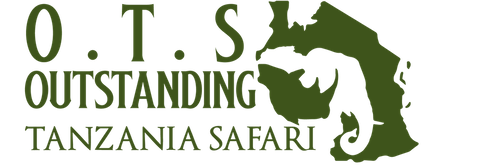Virunga National Park
NATIONAL PARk
welcome to Virunga National Park
Virunga National Park (covering an area of 790,000 ha) comprises an outstanding diversity of habitats, ranging from swamps and steppes to the snowfields of Rwenzori at an altitude of over 5,000 m, and from lava plains to the savannahs on the slopes of volcanoes. Mountain gorillas are found in the park, some 20,000 hippopotamuses live in the rivers and birds from Siberia spend the winter there
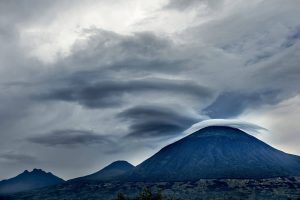 Virunga National Park is unique with its active chain of volcanoes and rich diversity of habitats that surpass those of any other African park. Its range contains an amalgamation of steppes, savannas and plains, marshlands, low altitude, and afro-montane forest belts to unique afro-alpine vegetation and permanent glaciers and snow on Monts Rwenzori whose peaks culminate in 5000 m height. The property includes the spectacular massifs of Rwenzori and Virunga Mountains containing the two most active volcanoes in Africa. The wide diversity of habitats produces exceptional biodiversity, notably, endemic species and rare and globally threatened species such as the mountain gorilla.
Virunga National Park is unique with its active chain of volcanoes and rich diversity of habitats that surpass those of any other African park. Its range contains an amalgamation of steppes, savannas and plains, marshlands, low altitude, and afro-montane forest belts to unique afro-alpine vegetation and permanent glaciers and snow on Monts Rwenzori whose peaks culminate in 5000 m height. The property includes the spectacular massifs of Rwenzori and Virunga Mountains containing the two most active volcanoes in Africa. The wide diversity of habitats produces exceptional biodiversity, notably, endemic species and rare and globally threatened species such as the mountain gorilla.
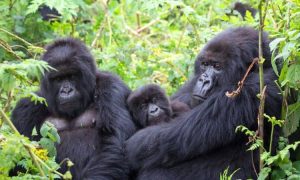
Criterion (vii): Virunga National Park offers the most spectacular montane landscapes in Africa. Mt Rwenzori with its jagged reliefs and snowy summits, its cliffs and steep valleys, and the volcanoes of the Virunga massif covered with afro-alpine vegetation of tree ferns and Lobelia and their slopes covered by dense forests, are places of exceptional natural beauty. The volcanoes, which erupt at regular intervals every few years, constitute the dominant land features of the outstanding landscape. The Park presents several other spectacular panoramas like the eroded valleys in the Sinda and Ishango regions. The Park also contains important concentrations of wildlife, notably elephants, buffalo, and Thomas cobs, and the largest concentration of hippopotamuses in Africa, with 20,000 individuals living on the banks of Lake Edward and along the Rwindi, Rutshuru, and Semliki Rivers.
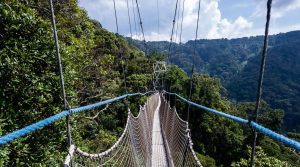
Criterion (viii): Virunga National Park is located in the center of the Albertine Rift, of the Great Rift Valley. In the southern part of the Park, tectonic activity due to the extension of the earth’s crust in this region has caused the emergence of the Virunga massif, comprising eight volcanoes, seven of which are located, totally or partially, in the Park. Among them, are the two most active volcanoes of Africa – Nyamuragira and nearby Nyiragongo – which between them are responsible for two-fifths of the historic volcanic eruptions on the African continent and are characterized by the extreme fluidity of the alkaline lava. The activity of Nyiragongo is of world importance as a witness to the volcanism of a lava lake: the bottom of its crater is in fact filled by a lake of quasi-permanent lava that empties periodically with catastrophic consequences for the local communities. The northern sector of the Park includes about 20% of the massif of Monts Rwenzori – the largest glacial region of Africa and the only true alpine mountain chain of the continent. It borders the Rwenzori Mountains National Park of Uganda, inscribed as World Heritage, with which it shares the ‘Pic Marguerite’, the third highest summit of Africa (5,109 m).
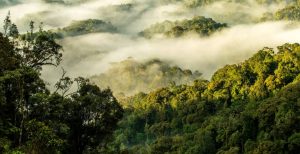
Criterion (x): Due to its variations in altitude (from 680 m to 5,109 m), rainfall, and nature of the ground, Virunga National Park possesses a very wide diversity of plants and habitats, making it the top African National Park for biological diversity. More than 2,000 premier plant species have been identified, of which 10% are endemic to the Albertine Rift. The afro-montane forests represent about 15% of the vegetation. The Rift Albertine also contains more endemic vertebrate species than any other region of the African continent and the Park possesses numerous examples of them. The Park contains 218 mammal species, 706 bird species, 109 reptile species, and 78 amphibian species. It also serves as a refuge to 22 primate species of which three are the great ape–mountain gorilla (Gorilla beringei beringei), the eastern plain gorilla (Gorilla beringei graueri), and the eastern chimpanzee (Pan troglodytes schweinfurthi), with a third of the world population of mountain gorillas. The savannah zones of the Park contain a diverse population of ungulates and the density of biomass of wildlife is one of the highest on the earth’s Planet (27.6 tons/km2). Among the ungulates, there are certain rare animals such as the okapi (Okapi johnstoni), endemic to the Democratic Republic of the Congo, and the red forest duiker (Cephalophus rubidus), endemic to Monts Rwenzori. The Park also comprises important tropical zones essential for the wintering of Palearctic avifauna.
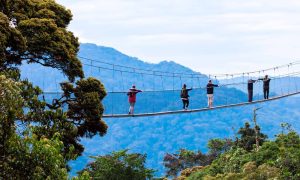
Integrity
The Park is characterized by a mosaic of extraordinary habitats that extend over 790,000 ha. The property is clearly delineated by the 1954 Ordinance. The wealth is well protected despite the economic and demographic challenges to its periphery.
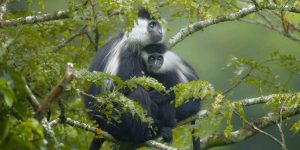
The Park contains two highly important ecological corridors it connects the different respective sectors: the Muaro corridor connects the Mikeno sector to the Nyamulagira sector; the west side connects the north sector to the center sector of the Virunga massif. The presence of the Queen Elizabeth National Park, a protected area contiguous with Uganda, also constitutes an ecological land corridor connecting the center and north sectors. Also, Lake Edward forms an important aquatic corridor.
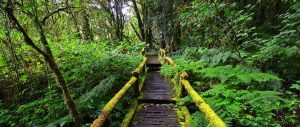
Protection and management requirements
The property has benefited from the status of a National Park since 1925. Its management authority is the Congolese Institute for Nature Conservation (ICCN) the body which has lost numerous agents killed on active service. The Park encounters management problems.
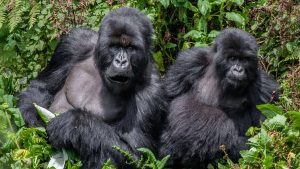
To assure the perpetuation of resource values of the property, the Park must be managed on a scientific basis and possess a management plan which will facilitate, among others, a better delineation of the different zones. Strengthened surveillance is required to assure the integrity of the Park boundaries. It would reduce poaching, deforestation, and pressure on the fishery resources (which risk increase), notably activities by isolated armed groups. To this end, the strengthening of staff and availability of equipment as well as the training of Park staff are of primary importance.
Improvement and strengthening of the administrative and surveillance infrastructures would contribute towards reducing the pressure on rare and threatened species, such as mountain gorillas, elephants, hippotomuses, and chimpanzees. In view of the important increase in the population, the establishment of buffer zones in all sectors is indispensable and a matter of urgency. Another priority is to establish a Trust Fund to guarantee sufficient resources for the long-term protection and management of the property.
The promotion of localized and controlled tourism could increase income and contribute towards regular financing for the maintenance of the property.
Notes
- Property inscribed for both geological and ecological values under natural criterion N (ii) before 1994. Criterion N (i) [Operational Guidelines 2002] was added.
Customised Vacation To Rwanda?
Wildlife Safaris, Beach holidays, Nyungwe Forest, Gorilla Trekking,Volcano Mountain and cultural tours
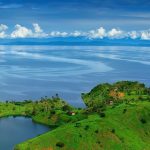

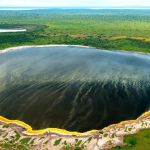

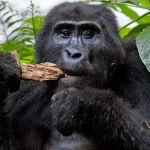
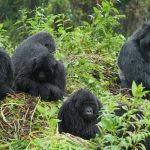
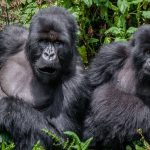
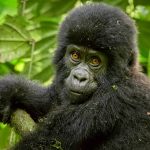
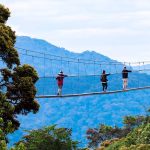
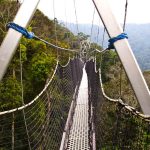
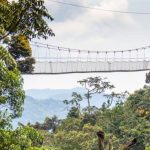
Other Destinations
Wildlife Safaris, Beach holidays, Kilimanjaro trekking, Hiking and cultural tours
